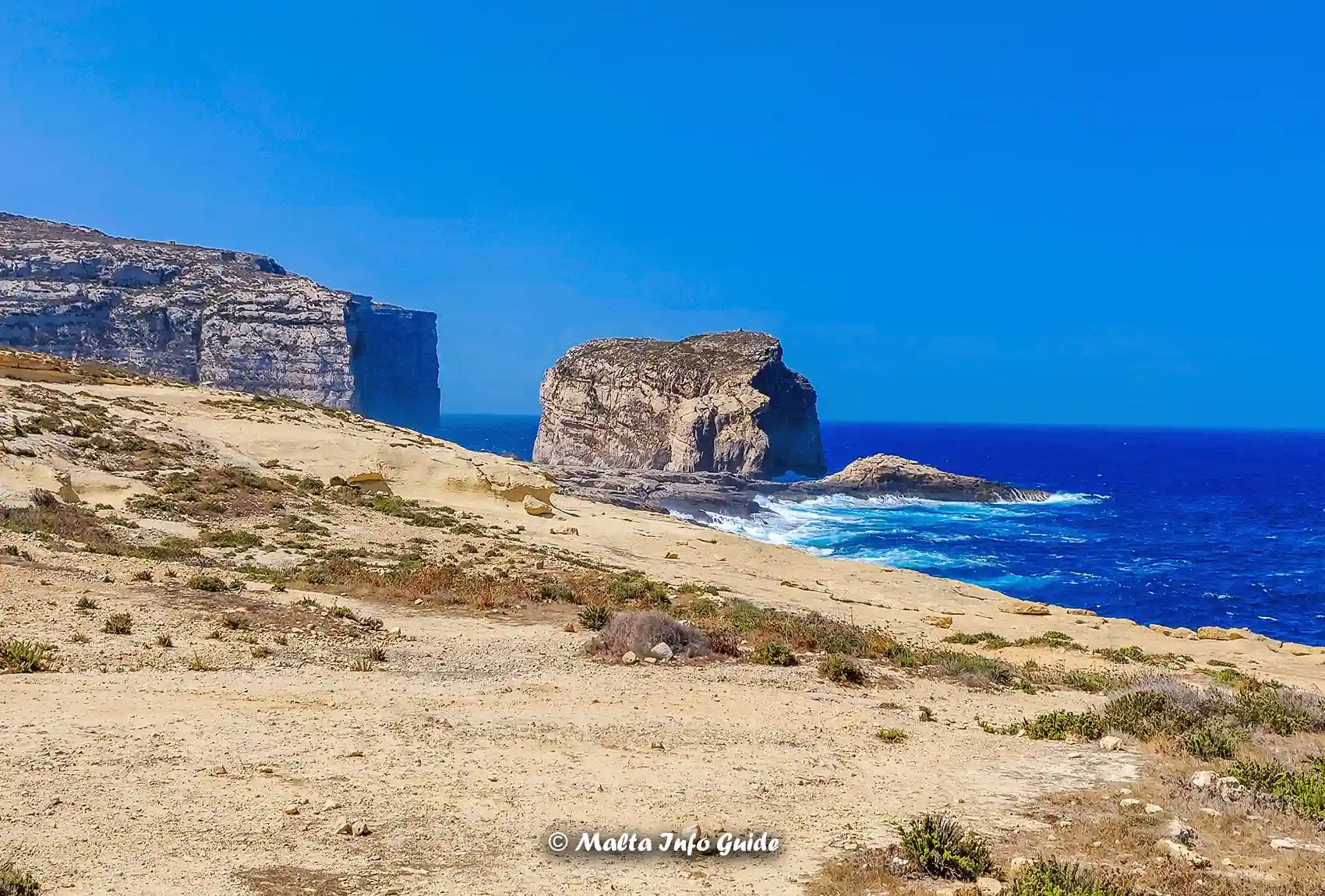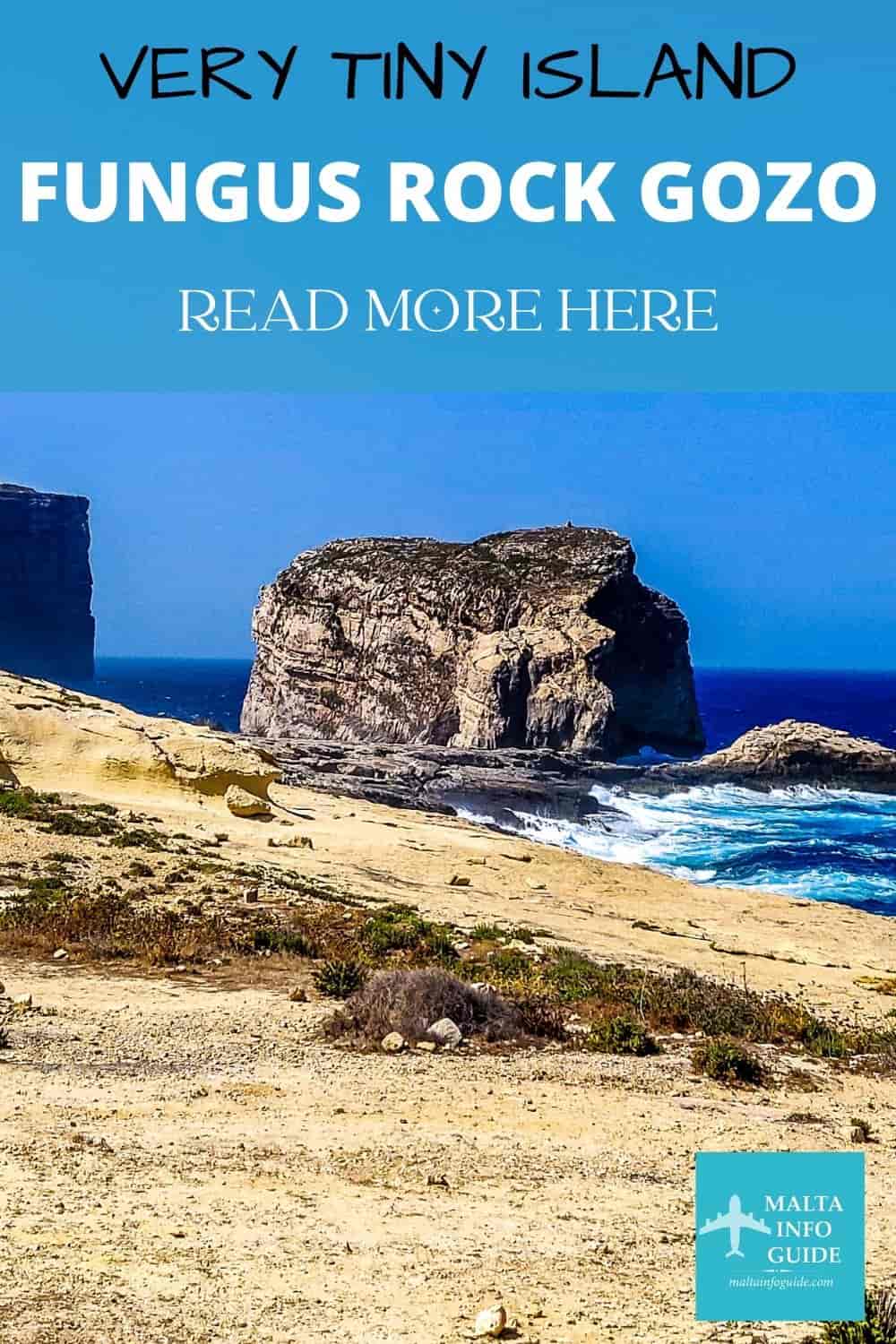- Home
- Gozo Island
- Fungus Rock
the Fungus Rock at Dwejra, Gozo
The Curious Legacy Of The Fungus Rock, A Monument Of Medical History
Fungus Rock, a rugged islet at the entrance of Dwejra Bay, stands as a sentinel of history and natural wonder harbouring a tale steeped in history and medicine.
This seemingly inconspicuous rock holds a fascinating story tied to the Knights of St. John, involving medieval medicine, exclusive access rights, and stringent security. This article delves into the rich tapestry of Fungus Rock's past, its medical uses, and its significance both historically and in present-day Gozo.
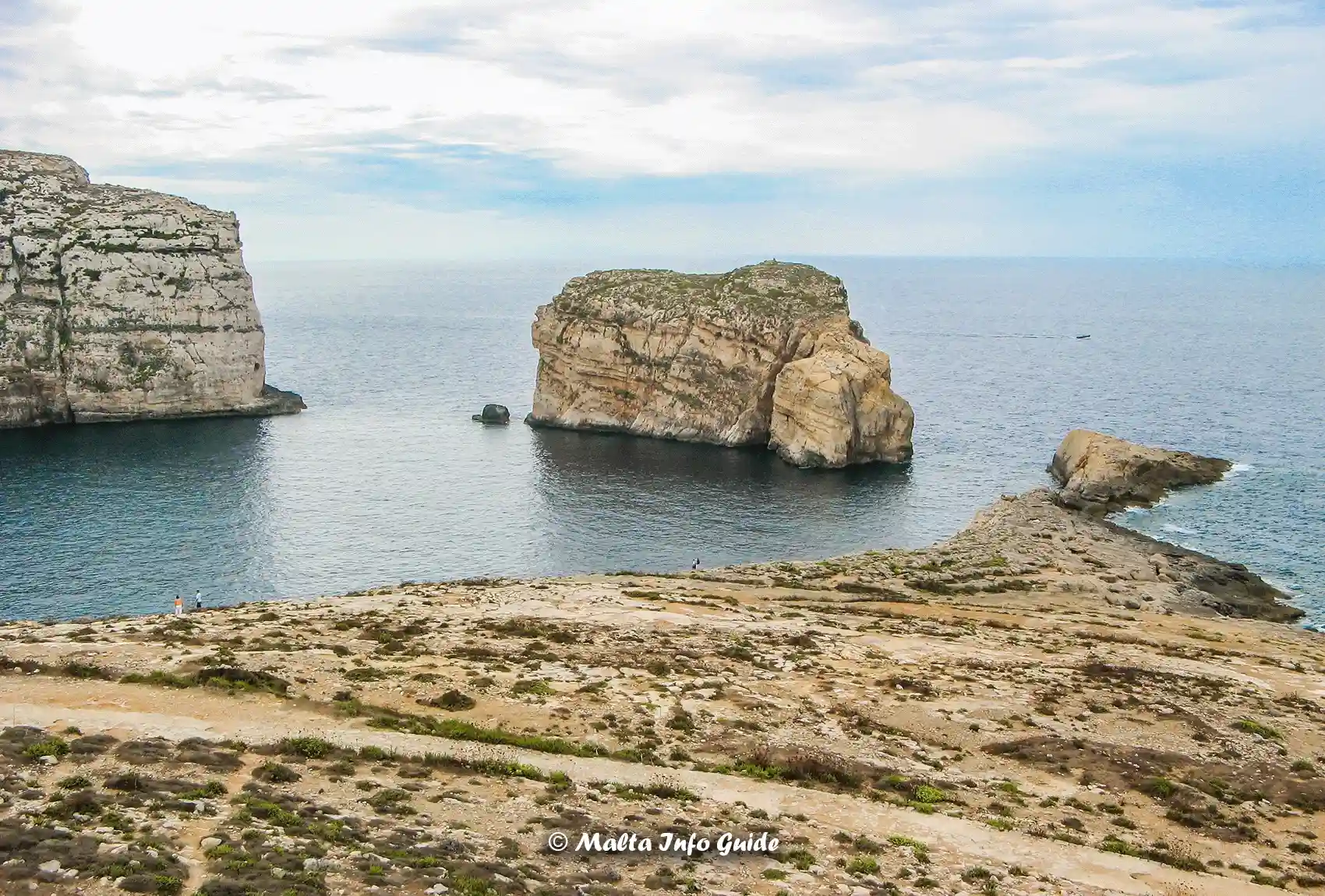 Embracing Fungus Rock From Dwejra Tower
Embracing Fungus Rock From Dwejra Towerwhat to find on fungus rock page
- The Historical Background Of Fungus Rock
- The Significance Of Fungus Rock In Medicine
- Protection And Harvesting
- The Relevance In Modern Times
- General Information And Tips For Visiting
- Marine And BirdLife At Fungus Rock Dive Site
- Frequently Asked Questions
The Historical Background of Fungus Rock
Discover the essential role the Knights Hospitaller played in forming the history of Gozo, from their strategic interest in Fungus Rock to important accomplishments made throughout the islands.
Geographical Significance And Origins
Fungus Rock is a tiny island at the mouth of Dwejra Bay, often referred to as "Il-Ġebla tal-Ġeneral" (the General's Rock) with a surface area of 0.007 km2 (0.0027 sq mile). It was of importance to the Knights Hospitaller because of its strategic location and formation, which dates back thousands of years due to geological activity.
It is a 65-meter-high rock 60 metres away from the mainland completely encircled with water and located at the mouth of a splendid Dwejra Bay beside the Azure Window. It is located on the island of Gozo. This small, unassuming rock formation played a crucial role in the medical practices of the Knights of St. John, becoming a guarded treasure of the Maltese archipelago.
Disclaimer — We may earn a commission if you book via certain links on the website. No extra cost to you.
📹 Top 7 Best Places To Visit in Malta For 2025
Wondering which spots in Malta should be on your 2025 travel list? Join us on a journey across Malta as we highlight breathtaking views, cultural gems, and experiences you won’t want to miss. Subscribe to our YouTube channel for more content like this. (Sound ON 🔊)
The Impact of the Knights of St. John on the Maltese Archipelago
The Maltese islands' history was significantly shaped by the Knights Hospitaller, who were thereafter referred to as the Knights of Malta. When they arrived in 1530, they significantly advanced military strategy and architecture in Malta and Gozo. They were also well respected for their medical services throughout Europe.
Their impact went beyond fortifications; they built hospitals and brought in cutting-edge medical procedures, strengthening their standing as forerunners in healthcare and healing and leaving a long-lasting mark on the islands.
It was in 1798 when Napoleon Bonaparte drove the Knights of Malta off the island. Napoleon made a halt at Malta with his navy while leading his mission to Egypt.
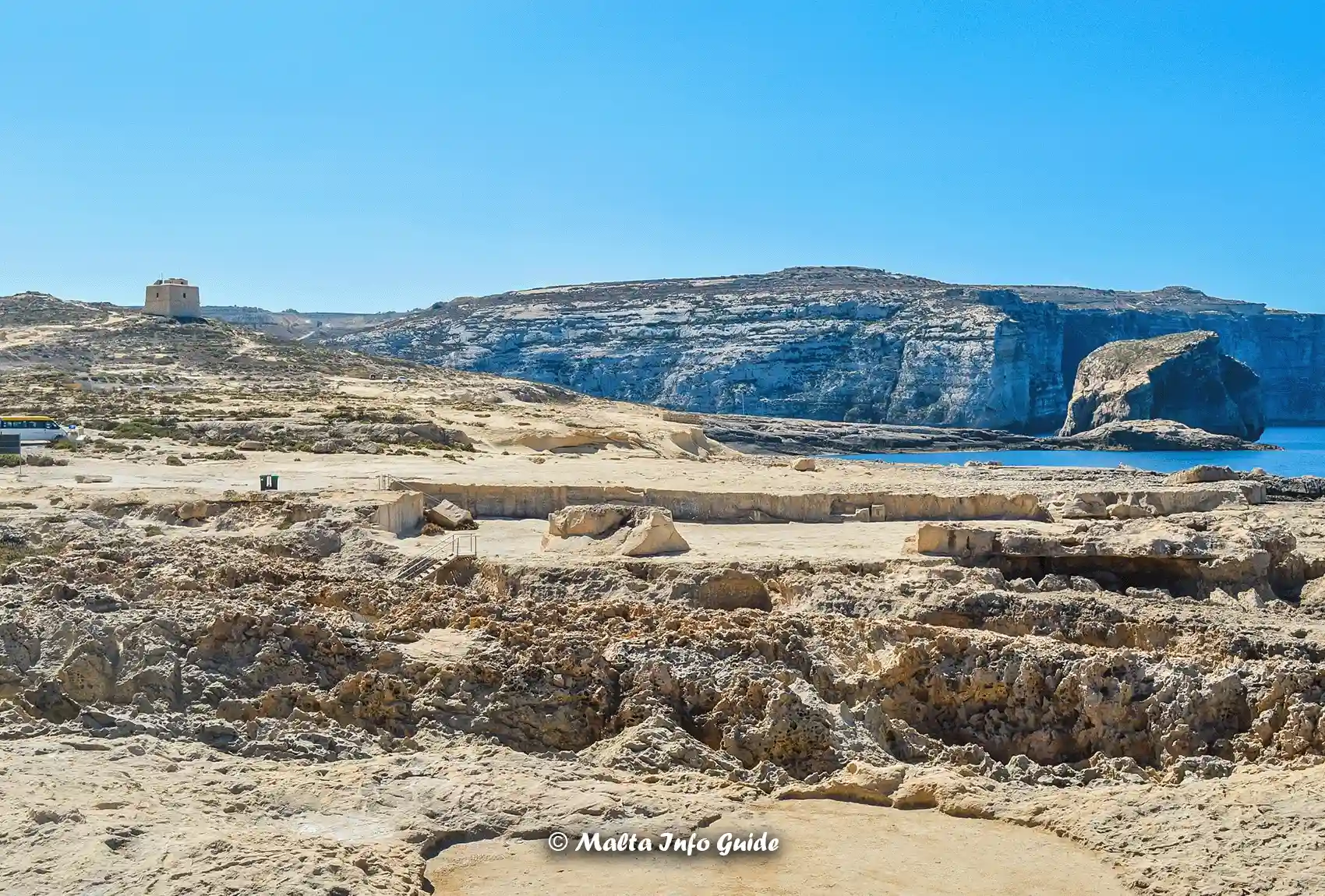 Rocky Coastline with Dwejra Tower and Fungus Rock
Rocky Coastline with Dwejra Tower and Fungus RockThe Significance Of Fungus Rock In Medicine
Explore the healing marvels of Fungus Rock, where the Knights of St. John relied heavily on the distinctive Malta Fungus, renowned for its therapeutic qualities.
The Discovery of the Fungus Rock
On this little island, a peculiar plant known locally as Għerq is-Sinjur was found by the captain of a squadron of galleys from the Knights of Malta. The plant, known historically as the "Malta Fungus," can only be found growing on the arid topography of the island. It was highly valued for its amazing therapeutic qualities, especially for stopping bleeding and mending wounds.
Traditional Medicine Used By The Knights
In their Sacra Infermeria (Holy Infirmary) in Valletta, the Knights of Malta did employ the Malta Fungus, or *Cynomorium coccineum*. Because of its alleged hemostatic (blood-stopping) and therapeutic qualities, this plant was highly prized and played a vital role in its medicinal procedures. It was an invaluable element of the Knights' medical arsenal because they thought it was exceptionally successful in treating a wide range of diseases, especially those involving wounds and bleeding.
Protection, Harvesting & What Is The ‘Maltese Fungus’?
Understand the stringent protections and collection techniques for the precious "Maltese Fungus," a rare plant essential to the Knights' healing rituals on Fungus Rock.
How Was The Fungus Rock Guarded
Acknowledging the fungus's importance, Grand Master Pinto declared the Rock off-limits in 1746; those who dared to enter risked serving as oarsmen in the Knights' galleys for three years.
To eliminate handholds, he further gave the order to smooth the rock face's edges. To protect the healing plant, there was a standing watch at the Dwejra tower.
Transport and harvesting methods
It was dangerous to harvest. The gatherers had to be dropped by rope or climb the steep edges of the cliff. Therefore, a heavy rope that was attached from the mainland to the rock and a basket that was tied to it to carry the fungus and its person was installed to securely transfer the collected fungus over a distance of 50 metres (160 feet).
Afterwards, it was transported to mainland Malta and taken to the Knights of Malta infirmary on Malta's mainland for processing and use.
What Is The ‘Maltese Fungus’?
Cynomorium coccineum, often referred to as the "Maltese mushroom," is a notable parasitic plant that grows on the harsh rocky shores of Fungus Rock in Gozo. Known for its thick, fleshy, and somewhat phallic appearance, this unique species lacks chlorophyll and relies on its host plants for nutrition.
Historically valued for its medicinal properties, particularly in traditional Chinese and Maltese herbal medicine, Cynomorium has been used to treat various ailments, from renal dysfunction to digestive disorders. Despite its name, it is not a fungus but is part of the Balanophoraceae family, showcasing a fascinating example of nature's complexity and diversity.
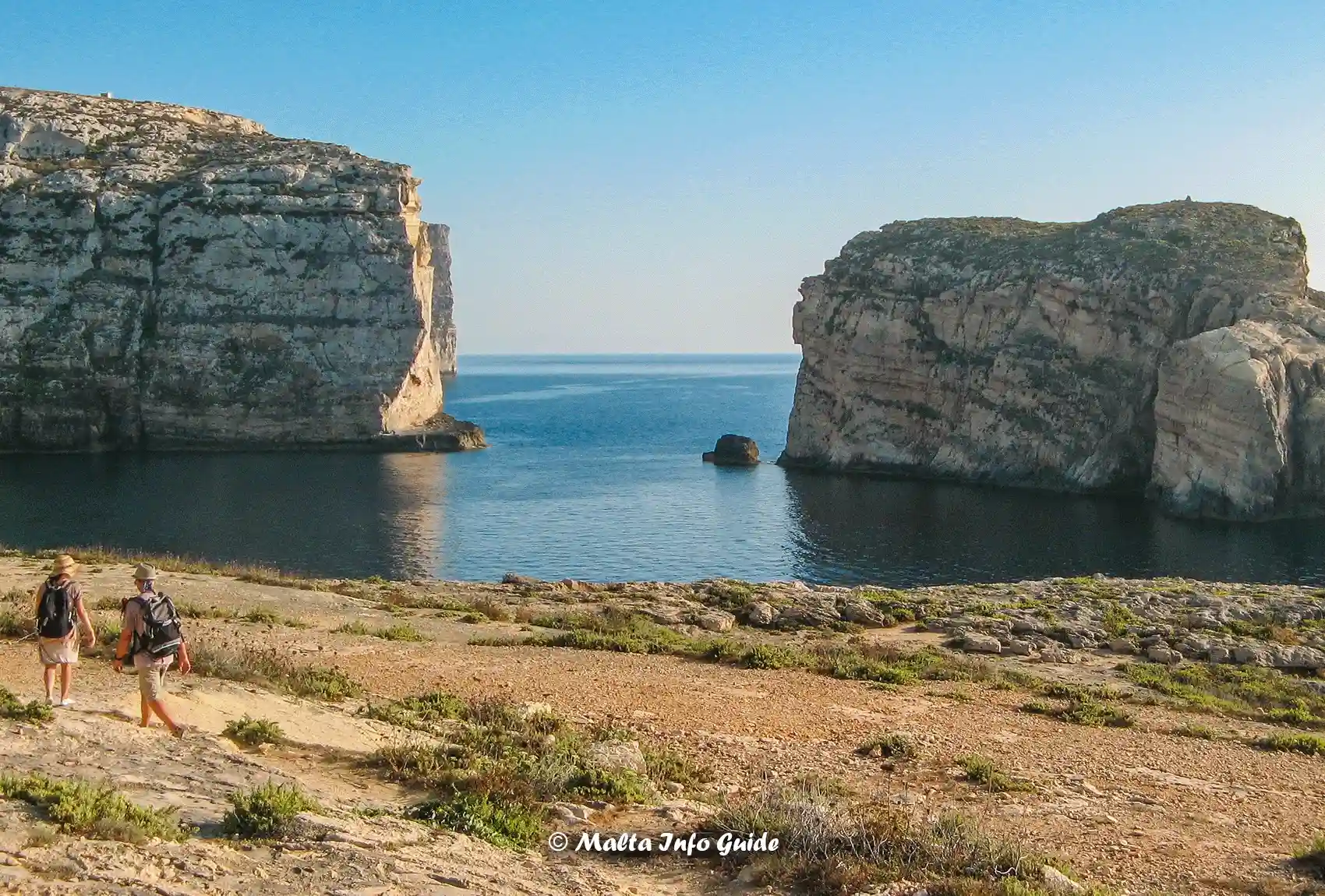 Things to do in Gozo | Sunset Hike Overlooking Fungus Rock, Dwejra Bay
Things to do in Gozo | Sunset Hike Overlooking Fungus Rock, Dwejra BayThe relevance In modern times
Learn how Fungus Rock's 1992 classification as a Conservation Area maintains its natural integrity and raises its attractiveness as a travel destination.
Fungus Rock as a Tourist Attraction
the importance today and conservation
Fungus Rock was designated as part of a Special Area of Conservation in 1992. This designation was part of Malta's efforts to protect its natural and historical environments, especially those with unique ecological and scientific value, such as the area around Fungus Rock in Dwejra Bay.
Conservation Today and Its Importance
This classification ensures that human activity doesn't harm the natural ecosystem, protecting its distinctive flora and wildlife. These conservation initiatives highlight the importance of the environment for tourism while empowering local communities to protect it.
This preservation highlights the area's significance on a worldwide scale by maintaining its natural health and enhancing its appeal as a pristine, educational destination for tourists.
the endemic lizard found here
Fungus Rock's endemic lizard is a subspecies of Podarcis filfolensis, the Maltese wall lizard. There is a subspecies of Podarcis filfolensis generalensis found on Fungus Rock, which is named after the rock's Maltese name, il-Ġebla tal-Ġeneral (The General's Rock). A reddish belly and blue flanks distinguish this lizard from other subspecies found on the Maltese islands, a unique adaptation.
other sights to visit in gozo
Apart from visiting the Dwejra Heritage Park, there are plenty of other things to do in Gozo. Several suggested sights are as follows: Citadel Gozo | Marsalforn | Xlendi Bay | Comino Island | Beaches in Gozo Island | Ggantija Temples.
General Information and Tips for Visiting
Discover the ideal times and places to observe Fungus Rock as well as the important visitor guidelines that must be followed in order to preserve the site for future generations.
Best Times to Visit and What to Expect
Fungus Rock can be viewed from Dwejra Bay as well as all around the former Azure Window. From the top of the Dwejra Tower, you can see it best; make sure you check the tower's opening hours to make sure you can go up. From here, you can enjoy spectacular views of the Mediterranean Sea and rugged coastline.
At sunset, the view becomes particularly stunning The sea's and the coastline's dramatic outlines are illuminated by the setting sun, producing a visually stunning scene that changes with the seasons.
Accessibility and Visitor Guidelines
To preserve Fungus Rock's ecological and historical value, access is limited. In order to maintain the integrity of the site and guarantee that it continues to be an interesting destination for future generations, visitors must abide by protection measures. This strategy maintains the natural environment's distinctive qualities and historical significance while strengthening present-day conservation initiatives.
Marine and BirdLife at Fungus Rock Dive Site
Explore the dynamic ecosystems of Fungus Rock, a remarkable natural display created by the convergence of rich marine life, amazing diving locations, and significant bird migration.
diving in gozo - The Fungus Rock dive
Expert divers may have an amazing underwater experience at Fungus Rock, which has striking vertical cliffs that drop dramatically into the ocean. Dwejra Bay is a well-protected area of the ocean with depths between 8 and 14 metres, framed by shallower reefs. Deeper than these can go down to 60 metres or more.
Along with big rocks, tiny caverns, swim-throughs, and a notable cave, a 14-metre plunge into the rock, the location is abundant in marine life. Diving in this dynamic and varied environment is an exciting experience. [2]
Sea life around the Fungus Rock
Amberjacks, groupers, and tuna are just a few of the colourful and varied species that may be found in the waters surrounding Fungus Rock. Sea urchins, tube worms, and starfish are scattered throughout the bottom, while barracudas glide effortlessly through the water.
The rock's algae-covered walls are home to bristle worms and sea potatoes, which provide a vibrant and active underwater environment. The region is an interesting travel destination for both marine scientists and divers because of its great biodiversity.
Bird Migration at Dwejra
An important migratory site is the Dwejra region of Malta, which is distinguished by its distinctive geological characteristics such as the Inland Sea, Fungus Rock, and coastal cliffs. It is most active in the spring and is home to several species, including the Eurasian Hoopoe, Isabelline Wheatear, and Western Marsh Harrier.
Even though they are calmer, fall and winter nevertheless draw migratory birds and common wintering species. Breeding species including Spectacled Warbler and Scopoli's hearwater are found in the region in the summer.
Visit Birdingplaces.eu to discover in further detail about the Dwejra Area where the Fungus Rock is located, along with expert guidance and seasonal highlights. [3]
frequently asked questions about the natural site
What is the Fungus Rock in Gozo?
What is the Fungus Rock in Gozo?
On the coast of the island of Gozo, the Maltese archipelago, Fungus Rock is a tiny island that may be found at the mouth of Dwejra Bay. It is well-known for both its unusual botanical interest and historical significance.
Why is it called the Fungus Rock?
Why is it called the Fungus Rock?
It takes its name from a plant that grows only on the rock itself, the Malta Fungus (Cynomorium coccineum). The Malta Fungus, despite its name, is a rare kind of parasitic flowering plant rather than a fungus. [1]
What was the purpose of the Malta Fungus?
What was the purpose of the Malta Fungus?
The Knights of St. John held the Malta Fungus in great regard for its therapeutic qualities since it was thought especially for stopping bleeding and mending wounds.
Is Fungus Rock accessible to visitors?
Is Fungus Rock accessible to visitors?
No, despite being extremely tough to climb, access to Fungus Rock itself is limited to safeguard its fragile habitat and maintain its historical integrity. Nonetheless, the rock is visible from several locations near Dwejra Bay.
How was Fungus Rock safeguarded by the Knights of St. John?
How was Fungus Rock safeguarded by the Knights of St. John?
The Knights imposed strict rules to safeguard the Malta Fungus, including the imposition of severe penalties on anybody found trespassing on the rock. Additionally, they stationed guards at the Dwejra Tower, which is situated directly in front of the Fungus Rock on the Gozo mainland.
What are the best options to see the Fungus Rock?
What are the best options to see the Fungus Rock?
There are several vantage points for sightseeing and taking photos of Fungus Rock near the Dwejra Bay area which extends to the area where the Azure Window used to stand.
Does Fungus Rock have an admission fee?
Does Fungus Rock have an admission fee?
While Fungus Rock is not publicly accessible, it is seen from the Dwejra area and there is no admission charge to observe it.
Which season is ideal for visiting Fungus Rock?
Which season is ideal for visiting Fungus Rock?
Since it can only be seen from the Gozo mainland, year-round is the ideal time to visit. The water may get quite harsh on stormy and windy days in the winter, and it's best to avoid going near the coast because of the large waves. The surrounding environment is so accessible and wide-open that even from a distance, the Fungus Rock is visible.
How is Fungus Rock being protected and preserved?
How is Fungus Rock being protected and preserved?
Fungus Rock is protected under Maltese law as part of the Dwejra Special Area of Conservation, ensuring its natural and historical features remain undisturbed.
fungus rock sources
- CYNOMORIUM - Parasitic Plant Widely Used in Traditional Medicine [1]
- Fungus Rock - Gozo Dive Sites [2]
- Dwejra | Birdingplaces [3]
- Setting up the first coastal nature reserve in Malta
Want To Share This Page On Pinterest? Pin It Here!
🏨 Find the Best Places to Stay Nearby
This fantastic interactive map below helps you discover the best accommodation across the island from a variety of trusted platforms. Explore different areas, compare prices, and book directly all in one place.
🚗 Need a car for your Trip to Malta?
Discovering the beauty of this gem in the Mediterranean by car is certainly the best way to experience its hidden beaches, charming villages, and also hidden paths that are difficult to reach by public transport.
Find The Best Rates On Your Car Rental Now!
 By Albert and Benjamin Magro
By Albert and Benjamin Magro